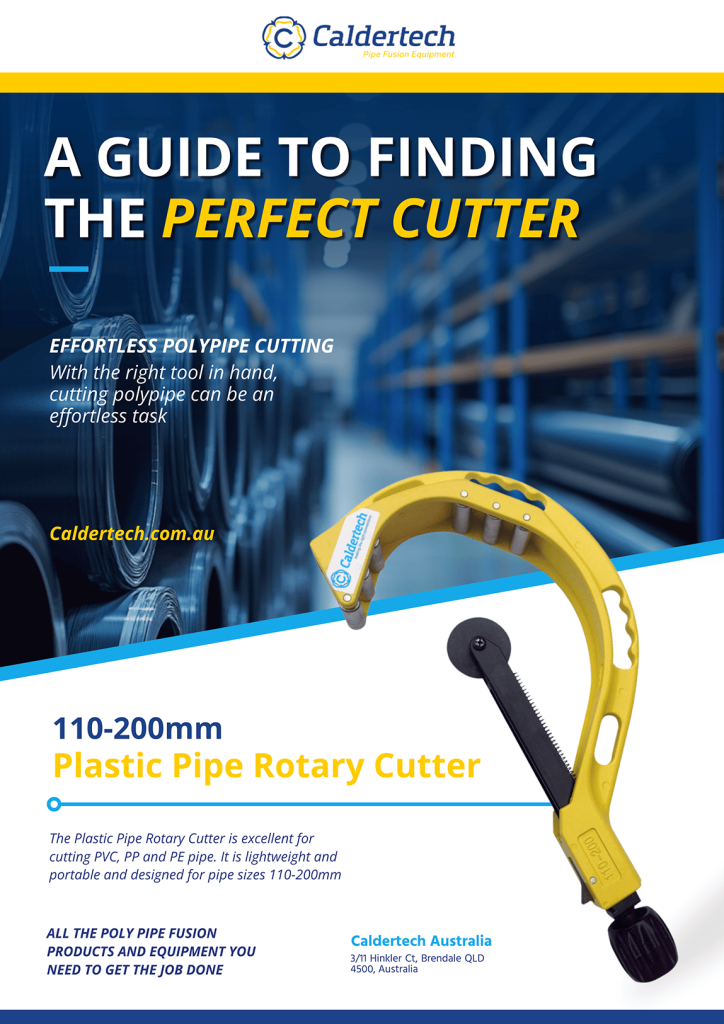Cutting polypipe, commonly used in plumbing, irrigation, and other piping systems, may seem straightforward, but choosing the right tool is crucial for achieving precise, clean cuts. A well-selected polypipe cutter can save you time, reduce waste, and ensure that your installations are free from leaks and other issues. This guide will walk you through everything you need to know to find the perfect polypipe cutter for your needs.
Understanding Polypipe and Its Applications
Polypipe, or polyethylene pipe, is favored for its flexibility, durability, and resistance to corrosion. It’s used in a variety of settings, from residential plumbing to large-scale agricultural irrigation systems. The material’s properties require a cutter that can handle its flexibility without crushing or deforming the pipe.
Types of Polypipe Cutters
There are several types of polypipe cutters available, each suited to different sizes of pipe and levels of precision:
Ratchet-Style Cutters: These are the most common type of polypipe cutters. They work by progressively cutting through the pipe as the handles are squeezed together. The ratchet mechanism allows for controlled cutting with minimal effort, making them ideal for cutting larger diameter pipes.
Scissor-Style Cutters: These are simple, manual tools resembling scissors. They are best suited for small-diameter pipes and are often used in situations where quick, straightforward cuts are needed. However, they require more manual strength and precision.
Guillotine-Style Cutters: These cutters use a sharp blade that is pushed down onto the pipe, much like a guillotine. They are known for delivering extremely clean cuts with minimal deformation, making them ideal for high-precision work.
Rotary Cutters: These tools are designed for very large diameter pipes. They work by rotating a blade around the pipe, gradually cutting through the material. Rotary cutters are often used in industrial settings where exact precision is required.
Key Features to Consider
When selecting a polypipe cutter, consider the following features to ensure you get the best tool for your needs:
Pipe Size Compatibility: Ensure the cutter you choose is compatible with the diameter of the polypipe you’ll be working with. Some cutters are adjustable, while others are designed for specific sizes.
Blade Quality: A high-quality, sharp blade is crucial for clean, effortless cuts. Look for cutters with replaceable blades made from durable materials like stainless steel or hardened steel.
Ergonomics: The design of the cutter should be comfortable to use, especially if you’ll be making multiple cuts. Ratchet-style cutters often have ergonomic handles that reduce hand fatigue.
Durability: Consider the material and construction of the cutter. Tools made from high-quality materials will last longer and perform better under repeated use.
Ease of Use: A good cutter should require minimal effort to use. Ratchet-style cutters are typically easier to use on thicker pipes, while scissor-style cutters may require more force.
Tips for Using Polypipe Cutters
Measure Twice, Cut Once: Always measure the length of the pipe carefully before making a cut. This reduces waste and ensures accuracy.
Apply Even Pressure: When using a ratchet or scissor-style cutter, apply even pressure to avoid deforming the pipe. Let the tool do the work, and avoid rushing the cut.
Keep the Blade Sharp: Regularly check the blade for sharpness and replace it if necessary. A dull blade can cause uneven cuts and damage the pipe.
Practice on Scrap Material: If you’re new to using a polypipe cutter, practice on a scrap piece of pipe first to get a feel for the tool.
Conclusion
Choosing the right polypipe cutter can make your work more efficient and precise, whether you’re a professional plumber, an irrigation specialist, or a DIY enthusiast. By understanding the types of cutters available, considering the key features, and following best practices, you can ensure that your polypipe installations are seamless and long-lasting. With the right tool in hand, cutting polypipe can be an effortless task, leaving you with more time to focus on the rest of your project.



